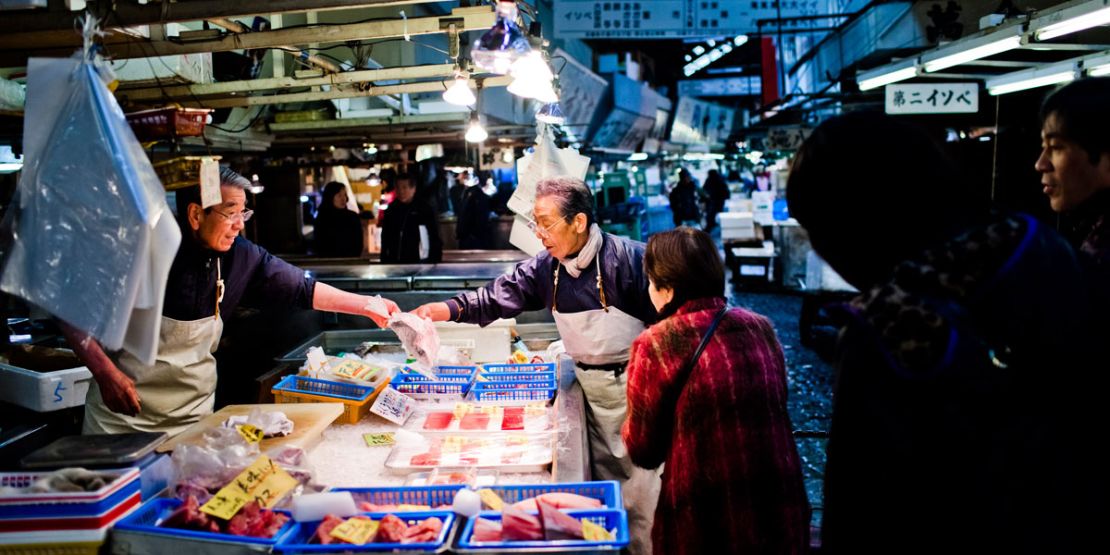Editor’s Note: CNN’s On the Road series brings you a greater insight into the customs and culture of Japan. On TV and online CNN explores the places, the people and the passions unique to this Asian nation.
Watch the special half-hour show on December 13, 14 & 15.
Story highlights
UNESCO added traditional Japanese cuisine, or "washoku," into its Intangible Cultural Heritage list
Ingredients play an important role in the traditional Japanese cuisine, particularly how fresh they are
The vast Tsukiji Market in Tokyo is where the country’s finest delicacies are sold and auctioned, not only fish – for which the market is famous – but also fruit and vegetable.
Earlier this month, UNESCO, the U.N. cultural organization, added traditional Japanese cuisine, or “washoku,” into its Intangible Cultural Heritage list.
“‘Wa’ means Japanese, ‘shoku’ means ‘to eat’ or ‘meal’ or anything food-related,” explains cooking instructor and “washoku” enthusiast Reiko Yoshikawa.
For Japanese, food is associated with many things. “First of all, it means happiness, the gathering, of being together,” Yoshikawa says. “Nutrition, in a sense, is also very important and also the appreciation to nature.”
Yoshikawa guided CNN through the legendary marketplace, which is set to be relocated in 2016. Like many shoppers, she is particular where she gets her supply. A fish stall called Di Nobu, for example, is where she sources her tuna.
Food is taken seriously in Japan, and it’s not only seafood, for which the country is famous. Melons are highly prized, and those grown in Japanese greenhouses are considered the perfect fruit and can command high prices.
During an auction a box of six melons fetches around $250 – “the highest price today,” Yoshikawa says.
See more: An insider guide to Tokyo’s Tsukiji fish market
“Washoku” is the 22nd Japanese cultural asset to be listed on UNESCO’s heritage list, which also includes the country’s theater forms such as Kabuki, Noh and Bunraku.

The U.N. recognition is another sign of how Japanese food has begun to earn global accolades. (In 2010, French gastronomy was included into the UNESCO list.)
In the past half-decade, Japan has quickly emerged as a major force in fine dining. It has 27 three-starred restaurants in the 2014 Michelin guide. The figure is matched only by France, a country long regarded as home to the world’s finest restaurants, chefs and cuisine.
But in contrast to the rarefied world of fine dining and superstar chefs, “washoku,” the world-recognized national treasure, is not anything fancy.
“It’s comfort food,” Yoshikawa says.
“It’s not something that you eat out in restaurants. The image, the impression of Japanese food outside of Japan is probably something that you would eat out at a restaurant. But, no, it’s actually very simple, very seasonal.”
Yenni Kwok contributed to this report
CNN’s On the Road series often carries sponsorship originating from the countries we profile. However CNN retains full editorial control over all of its reports. Read the policy
